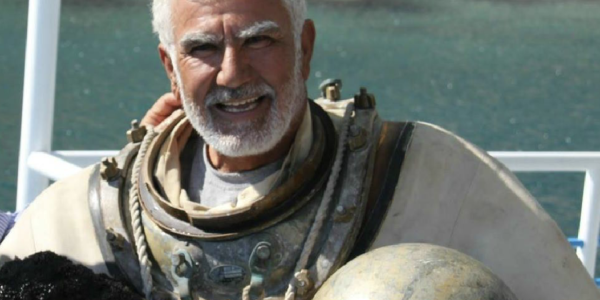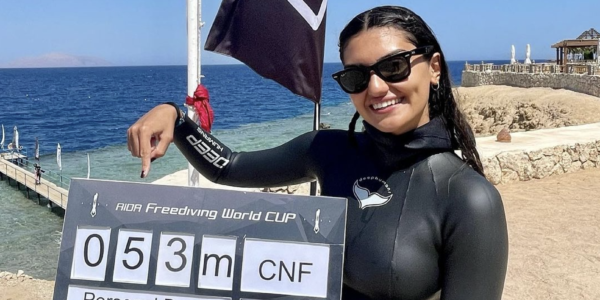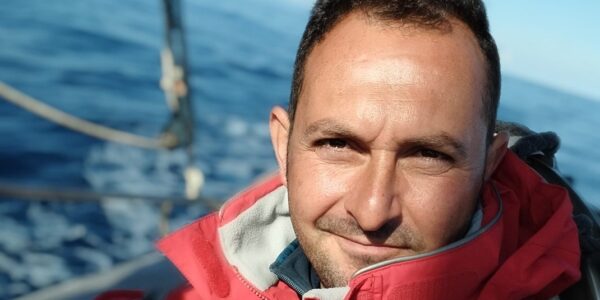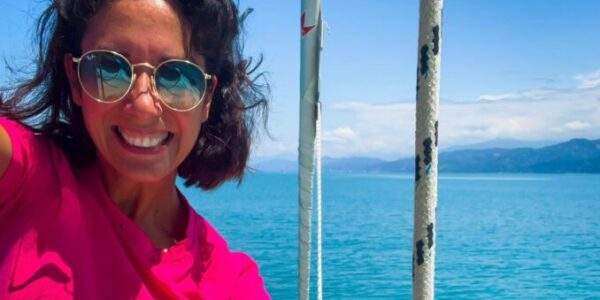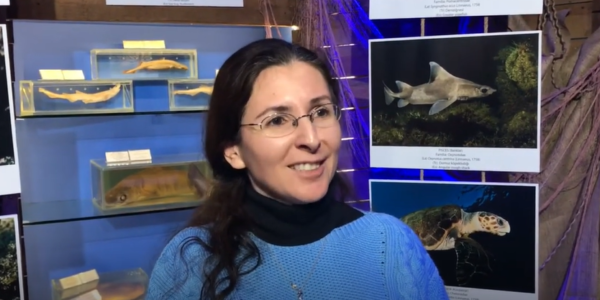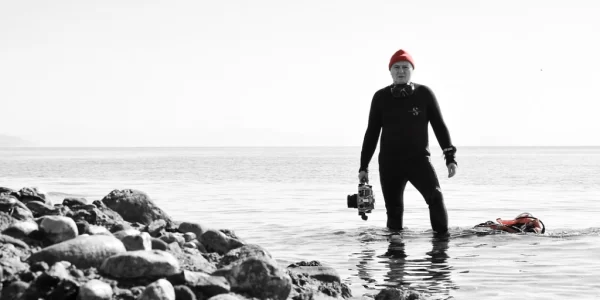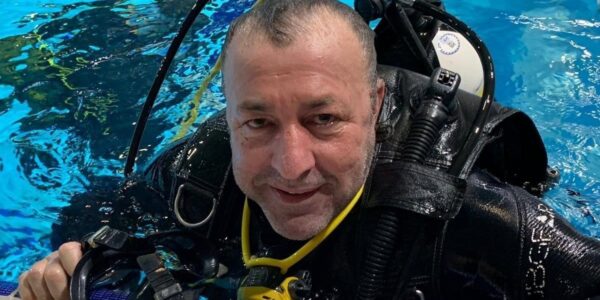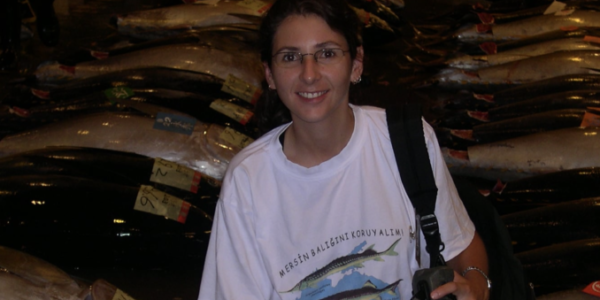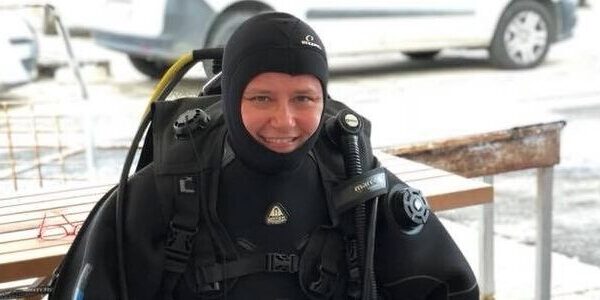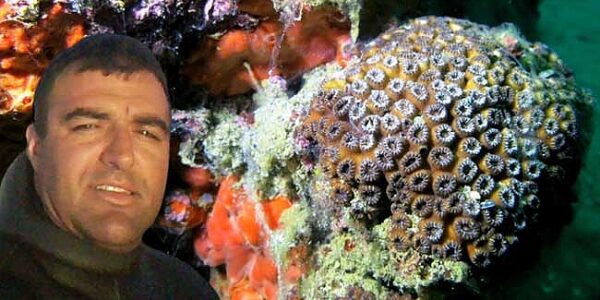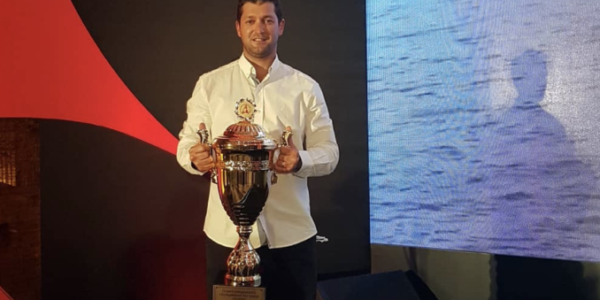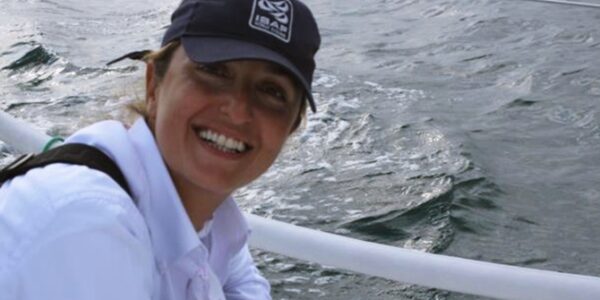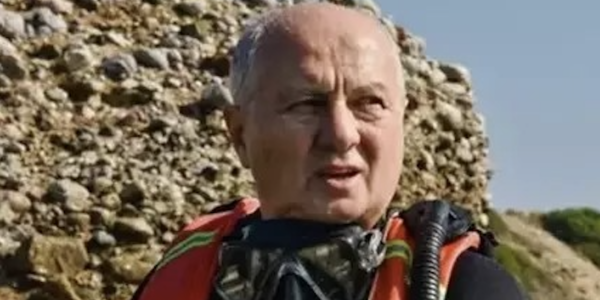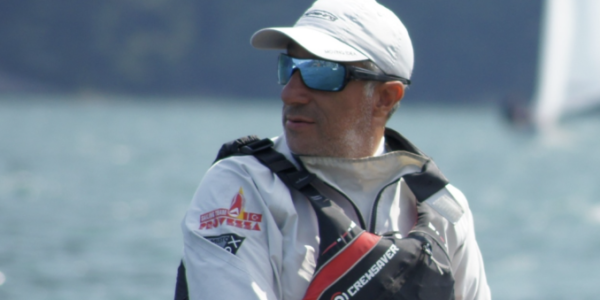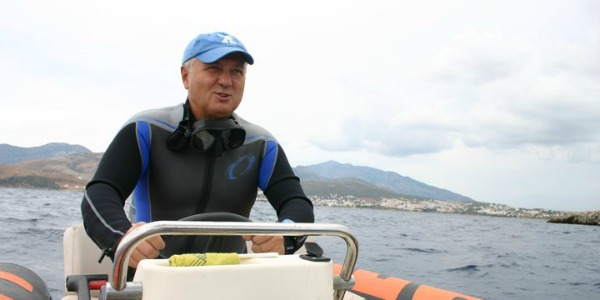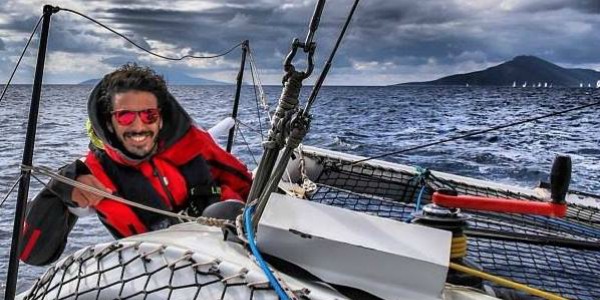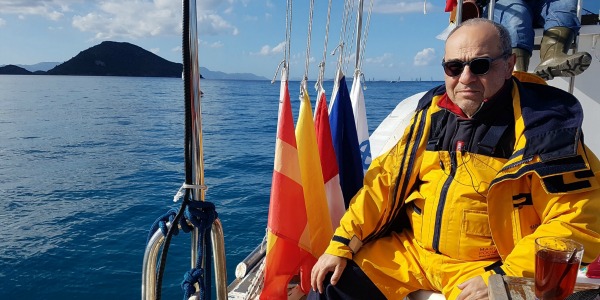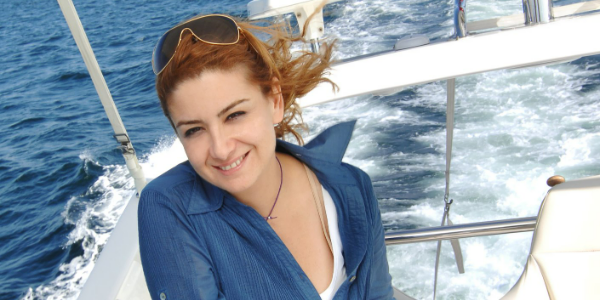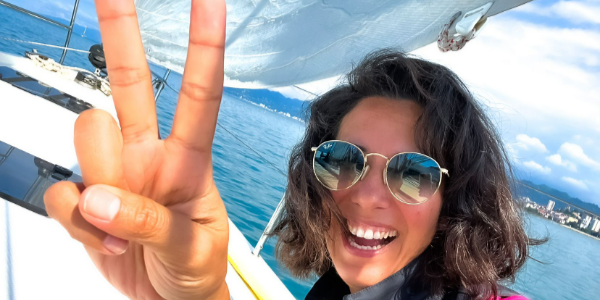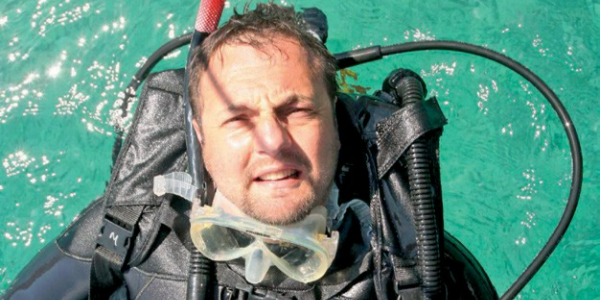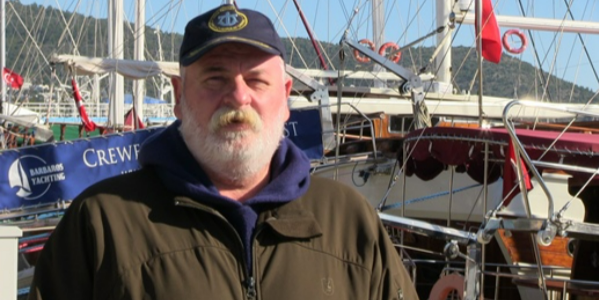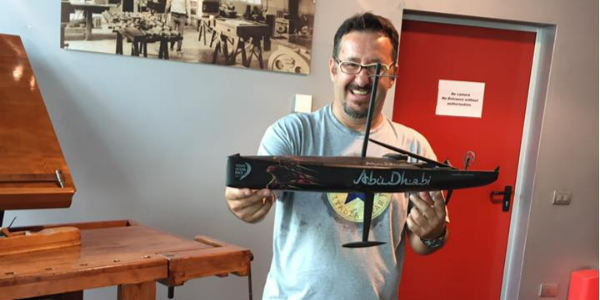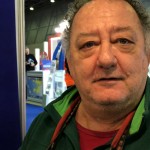
The Coral Triangle in the western Pacific Ocean is home to the greatest variety of marine life on the planet. In his latest book Coral Triangle Cameos, Alan Powderhan, with scientific consultant Sancia van der Meij, focuses on the ‘small majority’ – the diminutive yet vital and often overlooked inhabitants of this amazing world.
In the 12 fascinating chapters of Coral Triangle Cameos, Powderham and van der Meij look at everything from the smallest crustaceans hiding on the reef to the weird and wonderful life forms drifting in the open ocean on blackwater dives.
With Alan’s stunning photographs and extremely informative text, you are taken on a journey into a complex, interdependent marine world brimming with life.
In this extract from the amazing book we take a look at a selection of chapters and the beautiful images that accompany them.

MUSHROOM CLUB
The Fungiidae family – known as mushroom corals – are predominantly solitary single-polyp corals which may have multiple mouths. As with other Cnidaria, their tentacles are armed with stinging cells, called nematocysts.
As hexacorals, they form limestone structures to house their polyps. Their arms form a radial symmetry of six, though this geometry is not readily obvious. By comparison, the arrangement of the eight-tentacled polyps of octocorals is generally
quite plain to see.
Individual polyps of mushroom corals reach impressively large sizes, with some solitary species exceeding more than
25cm. While the juveniles start life anchored to the substrate by a stalk, most species are free-living as adults. I have occasionally seen them collect in large aggregations, a mobility which is quite at odds with our normal conception of corals’ sedentary lifestyle.
They are also able to right themselves if turned upside down, for example by wave action. However, beyond all the biology, a prime attraction is their wonderful abstract patterns and intricate structures.



CRYPTOBENTHIC CHARMERS
Cryptobenthic, which basically means ‘hidden on the bottom’, refers to the tiny, secretive fish which typically hide within the coral crevices and reef debris. Consequently, they are easily overlooked but are now considered to be key contributors to the viability of the reefs.
Recent research has focused on discovering the apparently huge deficit in the nutrients required to sustain the complex ecosystems of coral reefs.
The larvae of cryptobenthic fish are not broadcast but settle locally, thus creating a bounteous cycle of nutrition concentrated within the confines of the reef.
Blennies are prominent citizens of this community and are widely represented in tropical and temperate seas, with an estimated 350 species. They provide a variety of charming characters as they peer out from their hideaways with large, appealing eyes.
This description is qualified, since a sprinkling of the notorious fangblennies number among this family. Most blennies are herbivores but the fangblenny is the exception.
It operates in borrowed clothes, as it mimics cleaner fish. This enables it to approach and take a bite out of unsuspecting patrons attending cleaning stations.
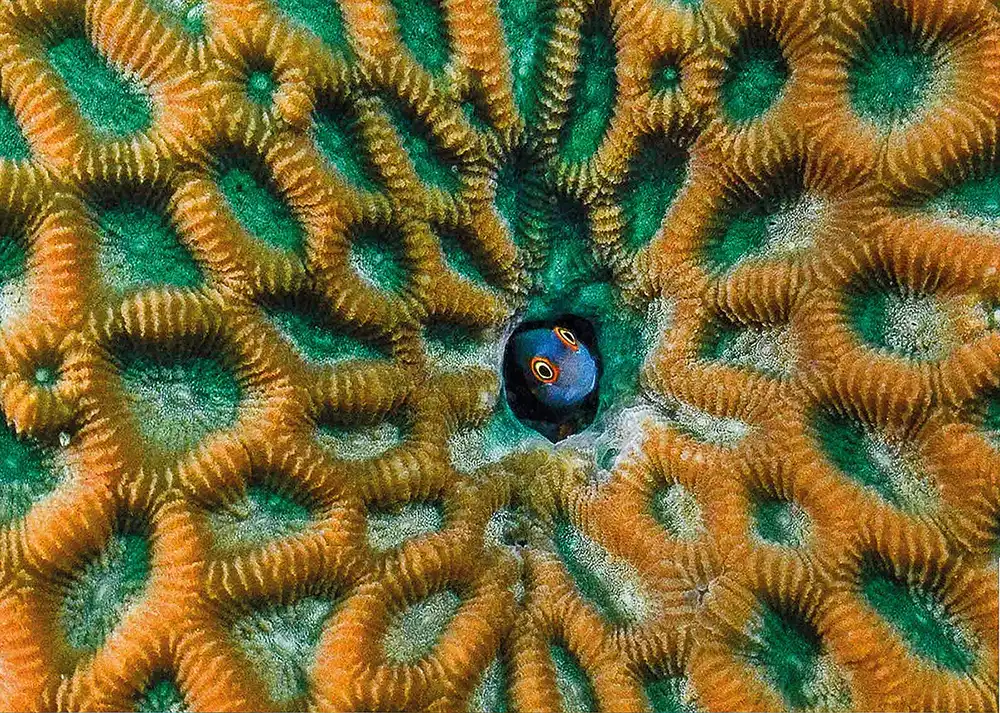
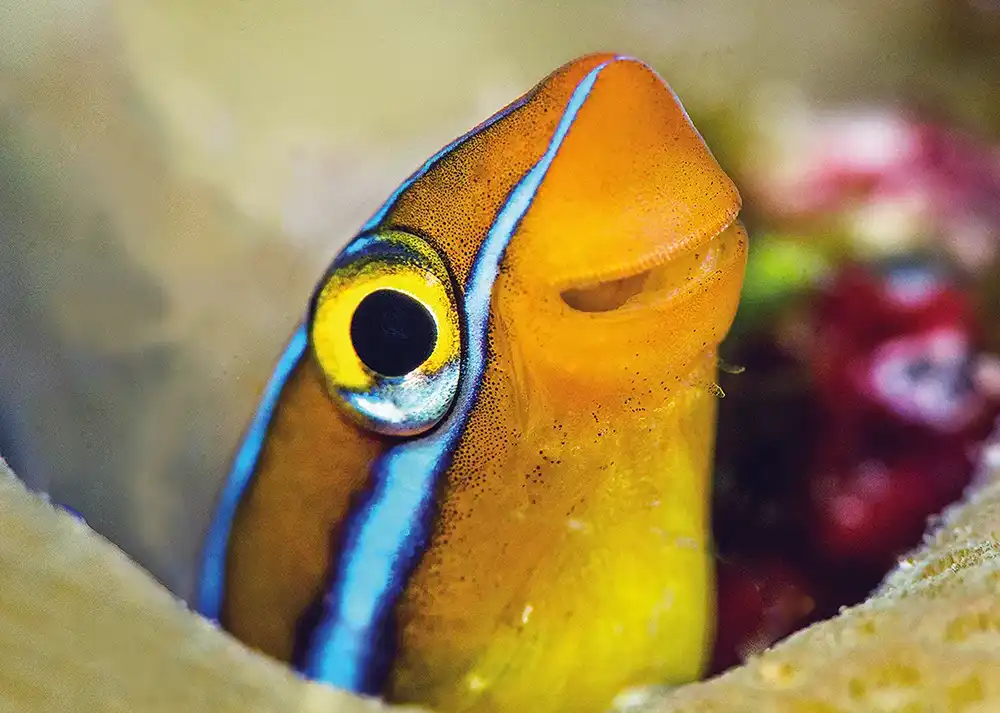
SMART SQUID
Among invertebrates, cephalopods are widely admired for their intelligence. They match some of the smartest vertebrates, which is pretty impressive for a mollusc.
Yet, being molluscs, they have evolved along completely distinct pathways. Their brains are cited as prime examples of convergent evolution. A direct experience of this mental prowess was provided early in my introduction to diving in the Coral Triangle.
My interest, then, was predictably attracted by the more obviously impressive subjects such as dense shoals of large fish. Underwater, good photography generally demands close proximity to the subject – a familiarity not readily welcomed
by the creatures of the reef.
So I was delighted, when encountering a large shoal of barracuda, to find that my local dive guide was well versed in the correct procedure. He immediately signalled to me to avoid further approach, and wait while he circled deeper to take position on the far side of the shoal. From this manoeuvre he was able to shepherd the fish towards me.
So, it came as quite a surprise when he blankly refused to apply the same tactics when we happened upon a school of squid. ‘Squid, like cats – too smart – don’t herd like barracuda’ was his amusingly laconic but insightful explanation.


DECORATED DECEPTION
Decapod means ‘ten footed’. Such anatomy is clearly evident in the crab pictures below, despite their liberal decoration of stinging hydroids.
This living array of potent protection is also a transferable asset. Remarkably, a moulting crab will painstakingly transplant
its collection of hydroids to the new carapace. It is a delicate and precarious operation. It has to be undertaken during the period of heightened vulnerability while the crab’s new exoskeleton hardens.
The spider crab has also adopted a singular approach to decoration, specialising in corallimorpharians, which most
notably disguise the crab’s outline.
Decorator crabs have a covering of fibrous material armed with tiny hooks known as setae. These enable them to attach their adornments like Velcro.



ALIEN DRIFTERS
While the rich biodiversity of the Coral Triangle may readily overwhelm the senses, some bizarre transparent creatures may float by unnoticed.
As illustrated, these range from ctenophores to heteropods and even pelagic ascidians. Ascidians are typically sessile creatures and establish colonies that can spread extensively.
The brief phase of the ascidian tadpole is totally focused on settling, affording it no time to feed. Accordingly, they have no mouth but do possess a range of chordate components including a primitive spine, and rudimentary eyes and brain.
After settlement, these redundant body parts are all absorbed in a transformation that matches the terrestrial example of the caterpillar to butterfly metamorphosis. But for the ascidian, it is a case of losing rather than gaining mobility.
The larva, now attached to the substrate, transmutes into a vase-like form for which it promptly develops intake and exit siphons to continue life as a filter feeder.
Not all ascidians sacrifice mobility, as there are pelagic species known as pyrosomes which may be seen rolling over the substrate like aquatic tumbleweed.
Ctenophores are voracious predators and come in a range of shapes and body sizes. Like a tiny iridescent refugee from Star Trek, with its gut full of plankton, this comb jelly has clearly enjoyed a successful nocturnal hunt.
Heteropods, (first image below) known curiously as sea elephants though actually molluscs, virtually defy description.




The post Ocean Life – Alan J Powderham’s Coral Triangle Cameos appeared first on DIVE Magazine.
